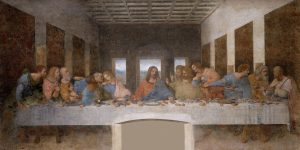As reporters and health officials walked onto the grounds of the mass suicide in Guayana, they were in shock over what they were seeing; hundreds of bodies face down on the ground, dead. One person who was at the site said that the amount of dead bodies was appalling, “it was depicted as not American, not religious, not sane, and ultimately not human.”1 Over 550 bodies of the 900 were unclaimed for almost six months until US Officials decided to cremate them. Once they brought the bodies back to the United States from Guayana, many Americans didn’t think it was right to have these bodies spread out on American soil because of the act they made. US Officials then decided to scatter the ashes of the dead bodies away from the United States border lines.

It all started with Jim Jones. Jones was a religious/political cult leader who had established the People’s Temple as a sect in Indianapolis in the 1950s. His cult focused on themes of communism, and the fight against racism, attracting many African Americans. He moved his cult to San Francisco in 1971, but it would not remain there for long. Soon after the group moved there, Jones was accused of financial fraud, physical abuse of his cult’s members, and mistreatment of children. After Jones was accused, in 1973, he became paranoid that someone would try to destroy his cult, so he moved his entire group to Guayana, South America, to build a socialist utopia known as Jonestown.

Once the cult moved to Guayana, people started to question even more the accusations being made against Jim Jones. Members who had left or escaped the cult were worried for the people still in the cult, so they convinced U.S. Congressmen Leo Ryan of California to fly to Guyana. “In November 1978, Ryan along with a group of journalists and relatives of cult members went to investigate the charges.”2 Jones did not like the idea of people coming to investigate, so he ordered his followers to have Ryan and his investigators assassinated. He ordered the attack on the group as they were returning to the airstrip to leave. A journalist named Charles Krause reported that that morning Ryan was attacked by a man with a knife, although he was not hurt by the incident. “Later that same day, Ryan and his party were attacked by assassins at the Port Kaituma Airstrip. Ryan and four others were killed and ten were injured.”3 While these killings were going on, Jones feared that he would lose his cult members and they would turn against him. He then proceeded to lead his people through a mass suicide, which was something the members had repeatedly practiced since the early 1970s.
These practices were called “White Nights” and consisted of members drinking a liquid that they believed was poisonous as a loyalty test to Jones.4 During these “White Nights,” people were woken up by a loud speaker, and they would assemble for the ritual of passing around a drink of kool-aid, which they were told was poison. Unfortunately, this time was not a test. Hundreds of adults and children lined up to drink this colorful, fruit-flavored punch, which contained cyanide and tranquilizers. Most of them thought they were just proving their loyalty as before, but as more people began to die, they realized that this time it was real. “Over 260 children, for example, had the poison given to them, while only about 40 adults escaped.”5 For those who died willingly though, collective suicide held a religious significance in the context of the worldview that had been established in Jonestown.

Collective suicide was a ritual that signified a purity of commitment to the community. On the night that they all drank this poison, Jim Jones announced “that the members of the community were united as black, proud socialists.”6 Collective suicide also promised release from a world dominated by what Jones perceived as American racism, capitalism, and fascism. He did not want to be captured and taken back to America, so instead he urged his followers to drink the poison, and “step out of the world.”7 Jones had told his followers that they were not committing suicide, but rather they were performing an act of freeing themselves from the harsh world that they lived in. There are later reports that when officials went to Jonestown, Jim Jones was found with gunshot wounds, raising the speculation that either he had committed suicide or someone else had killed him.
The Jonestown Massacre was the largest mass suicide in modern history and resulted in the largest single loss of American civilian life in a non-natural disaster until the September 11 attack in 2001. The mass suicide resulted in over 900 deaths of innocent lives. Once the bodies were found, the Guyanese government asked the United States to take the bodies back. US Officials decided to start sending a few people over to identify bodies so they could decide what to do with them. Over 500 bodies were unclaimed and that is when the United States decided to have the US Air Force come in to take the bodies back to the United States.”8 To this day, families of loved ones are still trying to find a memorial place for the lost lives.
- Encyclopedia of Religion, 2005, s.v. “Jonestown and Peoples Temple,” by David Chidester. ↵
- Dictionary of American History, 2003, s.v. “Jonestown Massacre,” by Carolyn Bronstein. ↵
- Dictionary of American History, 2003, s.v. “Jonestown Massacre,” by Carolyn Bronstein. ↵
- Dictionary of American History, 2003, s.v. “Jonestown Massacre,” by Carolyn Bronstein. ↵
- Encyclopdeia of Religion, 2005, s.v. “Jonestown and Peoples Temple,” by David Chidester. ↵
- Encyclopdeia of Religion, 2005, s.v. “Jonestown and Peoples Temple,” by David Chidester. ↵
- Encyclopdeia of Religion, 2005, s.v. “Jonestown and Peoples Temple,” by David Chidester. ↵
- Encyclopdeia of Religion, 2005, s.v. “Jonestown and Peoples Temple,” by David Chidester. ↵



150 comments
Nathan Alba
This article is crazy, I mean, I’ve heard of the massacre, but I didn’t know it killed over 900 people. It’s tragic really, to take religion (something sacred) and twist it into something so horrific. It is also sad that so many bodies were unclaimed. Jones killed all those people because he knew they were loyal and would do what he said, just awful.
Martina Rodriguez
It is hard to believe that such a cult existed on American soil in the first place. I’ve never been able to wrap my head around cult mentalities, for example, how so many people could be convinced to commit a mass suicide in the first place. I wish the events of Jonestown could have been reported soon, so maybe some lives could have been saved. Very interesting though that it is up for debate if Jones himself actually committed suicide like he had convinced nine hundred of his followers to do hours before.
Marina Castro
A lot of people might find absurd the fact that one man was able to brainwash an entire community. However, so many people joined the People’s Temple because they obtained what they needed. For some it was inclusiveness, understanding, and even forgiveness. It is very tragic to read about how the victims were so involved to the point they committed mass suicide. There should definitely be awareness of how dangerous these cults can get.
John Smith
I’ve always heard of the Jonestown Massacre, but to actually read about Jim Jones and his cult had me appalled. I guess that’s the power of persuasion and manipulation, but to actually kill 900 people in such a righteous manner, that takes a certain kind of person. I’d like to believe that everybody deserves a chance for forgiveness, but I’m not sure anyone on this Earth could forgive a man like Jim Jones.
Luis Magana
I wasn’t very informed about Jonestown until I read this article and it frightened me. For someone to act in that matter is horrifying and having a mental illness, which I believe he did, does not justify his actions. Jones manipulated people into believing he was a good person and was there to help but to their surprise he killed them. It is a tragedy and I feel bad for the people who lost their lives. If people had just known about his sick ideas the outcome could of been different. Thats the reason why you always have to be careful with your surrounding and who you associate with.
Madeline Torres
I never knew the actual truth behind the mass suicide of Jonestown and this article gave it to me. It’s very sad how these poor innocent children died in this type of way and how they had no choice other than to drink the kool-aid. It’s quite insane the amount of people who followed Jones and his cult and how loyal they were to this man. It makes one wonder if there are still cults like this today.
Crystal Baeza
I never heard of Jonestown or anything about this horrific massacre so I find this article informative and interesting to read. I can’t even begin to process how Jones could manipulate people into thinking he can actually help them but instead lead them to their death. It makes you wonder how things could have ended differently if he was caught sooner with his sick ideas. I feel awful for those lives taken away because they thought they were following a person trustworthy, loyal, and actually willing to help them out. It’s quick to show you have to be careful with your surrounding and always trust your gut instincts. I wish Jones could have been caught earlier to prevent this from happening, truly heartbreaking.
Maxx Arizmendi
I never knew what Jonestown was until I read this article, and now I’m shook over it. Reading about the mass suicide made me feel very uneasy. Just thinking about the innocent lives that were lost is a very heavy thought because the people in Guyana didn’t know what they were following at all. If Jones stayed in the US, it would have never happened and he would have been arrested for fraud and child abuse. This was a very interesting article to read.
Luisa Ortiz
I heard about this story before and still gives me the chills. I do not want to defend Jones whatsoever his actions were ruthless, egocentric and evil, with this been said I think he was sick, mental ill, loco. Because who in his right mind would do something like that? could he be schizophrenic? paranoiac? bipolar? My heart aches for the innocents. I feel his followers were seeking for love, for understanding and to find a community it is sad that what they found was brutal death and mind games.
Steven Hale
I previously had no idea that Jonestown took place in Guyana. I wonder if Jones and his followers stayed in San Francisco, would American law enforcement have arrested Jones for child abuse or fraud before he could direct a mass suicide? It is easy to think of Jim Jones as a totally evil person – and certainly he must have been – but he also must have been charismatic and intelligent to motivate so many people to both move across the world and commit suicide.